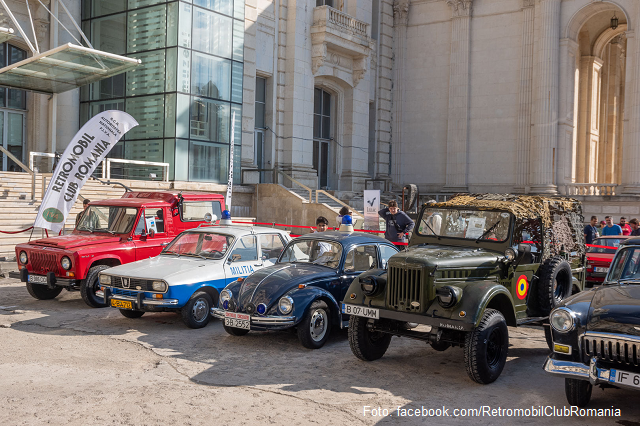Romanian socialist-era cars
A report from a somewhat unusual exhibition hosted a while back by the Contemporary Art Museum in Bucharest.

Steliu Lambru, 24.10.2021, 14:00
Retromobil
Club Romania, an association that has over 3,000 members around the country,
recently organised together with the Contemporary Art Museum in Bucharest an
exhibition entitled Socialist cars. Several dozen cars were on display on the
pedestrian area in front of the museum, affording visitors a glimpse into Romania’s
car making past. The cars on show all belonged to Romanian private individuals
or state institutions and were in circulation between 1964 and 1989, during the
communist regime. This explains the title of the exhibition, which is not only
about cars, but also about this historical period and the lives of the Romanian
people at the time.
We caught
up with Șerban Cornaciu, the deputy president of Retromobil Club Romania and
the organiser of the exhibition, who told us why the Contemporary Art Museum
was the perfect venue for this event:
The exhibition
is a counterpart to the collection of socialist realist art hosted by the museum
and consists of a selection of cars made between 1964 and 1989 and which were driven
in Bucharest. The idea was to try to recreate the atmosphere in society and the
lives of the people at the time through a series of exhibits and the cars that
could be found in the city. We are trying to tell the story of how these cars
came to be owned by people, how they were bought, who drove them and how people
who used these cars during socialism used to live.
20 cars,
a van, a bus, a truck and 4 motorcycles were on display in the exhibition
dedicated to socialist cars. Most of them were manufactured in Romania. Seven
of the cars were the Dacia 1300 model, which was the most popular car in Romania
before 1989 and which used to be made at a factory in Pitești. Three of these
cars were the standard Dacia 1300 model, one the sports version, a Dacia 1100
model and a Dacia 1300 model that was used by the police, as well as a Dacia
2000 used by the communist president Nicolae Ceaușescu and senior party figures
during official trips. Other Romanian brands in the exhibition is the Oltcit
Special model manufactured in Craiova before 1989 and the Aro off-road vehicle,
of which three models were on display: two Aro 243 cars, an Aro M461 C car and
an Aro Dacia 10 model.
Foreign brands also featured in the vintage car exhibition,
including three Soviet brands, namely the famous Moskvitch, Volga and Lada. A Volga
M 21 car made in 1961 used by high officials was one of the highlights of the
exhibition. The Moskvitch 403 model was one of the earliest mass-produced cars,
and the Lada 1200 model was one of the most reliable. The famous Trabant 601
could not have missed from an exhibition dedicated to socialist cars. Trabi,
as this car was lovingly named by its many fans, used to be manufactured in the
former German Democratic Republic and was in high demand in its heyday,
including in Romania. Western brands were represented in the exhibition by a
Mercedes 2200, two Volkswagen Beatles and a Fiat 850, all of which were very popular
in those times.
A TV van, A Roman Diesel bus and a Carpați truck, all of which
were manufactured in Romania, were the most unexpected exhibits. Organiser Serban
Cornaciu explains:
Each
exhibit has its own special story. They were owned by the state. I’m thinking
of the Roman Diesel bus, which is 11.3 metres in length, and the cars exported
by Romania during the socialist period and which were bought back by some of
our club members in an attempt to preserve the technical heritage of Romania.
These cars had been exported to Hungary and France and my colleagues bought
them back and restored them. The exhibition also contains a rare exhibit, a TV
van which used to be driven in the 1970s and was one of the first to be used by
the Romanian state. You can also see a Carpați 4 X 4 army truck, whose every piece
was carefully restored.
Two
BMW German motorcycles and the Romanian counterparts, the famous Mobra and Carpați,
were also on display at the exhibition dedicated to socialist-era cars. Organiser
Șerban Cornaciu tells us more:
I
believe it is the duty of us from Retromobil to show the cars in our collection
to the public and our communities. Our greatest joy is to be able to bring them
all together.
The exhibition
dedicated to Romanian socialist-era cars was also an opportunity to find out more
about the Romanian car-making industry before 1989.






























